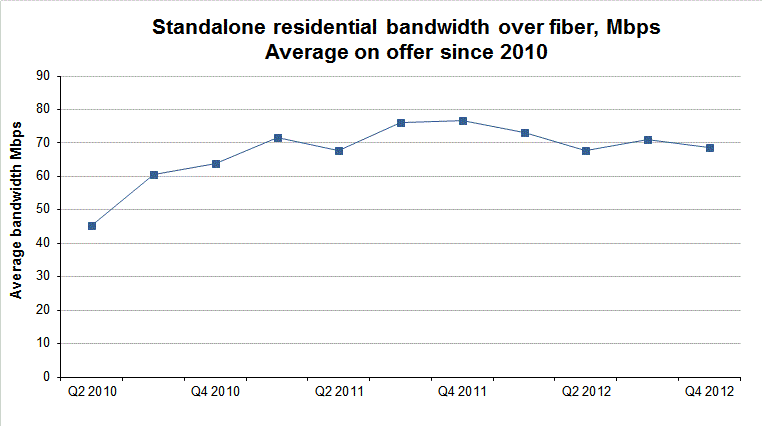Net digital subscriber line customer additions were negative in the fourth quarter of 2012 for the first time ever, Point Topic says.

The total number of DSL subscribers worldwide fell from 366.95 million in September 2012 to 366.66 million by the end of the year.
Point Topic says that signals the gradual demise of "all copper" connections, but not necessarily of fiber-reinforced copper connections, including both cable and telco very high bit rate versions of DSL.
Still, fiber and hybrid fiber connections now account for over 20 percent of the world’s fixed broadband lines, growing by more than 26 percent in 2012.
There were 643,770,042 broadband subscribers around the world by year-end 2012, according to Point Topic. FTTx is gaining ground on other technologies, including traditional DSL, which continues to be the most dominant technology in the market.
FTTx (including VDSL and VDSL2) showed the largest annual growth over the period between the fourth quarter of 2011 and the fourth quarter of 2012, growing 27 percent overall, compared to 7.2 percent for cable modem subscriptions and 3.6 percent growth for DSL.
Fixed wireless grew 12 percent over the year.
Looking at the current market share, fiber technologies, at 21 percent, have overtaken cable modem’s 19 percent share, globally.
At least for the moment, it appears that global consumer demand tops out at around 70 Mbps, and that level of access speed demand seems to be driven by the desire to watch online video, Point Topic researchers say.
At least so far, there are no apps that drive consumers to buy much more than 40 to 50 Mbps access, says Oliver Johnson, CEO at Point Topic. But one might argue it is the number of people per household that drives “typical bandwidth consumption.”
According to an exercise conducted by Point Topic, bandwidth consumption is almost directly related to the number of people per household, and the number of Internet-connected devices each person tends to use.
If one assumes a household is consuming bandwidth literally 24 hours of every day, all seven days a week for a whole month, then a single-person household, using two Internet-connected devices, might consume 13 terabytes a month.
A four-person household with two adults and two children might consume 29 terabytes, assuming each person has a bit more than one device each.
A “hacker” household with at least five people, and each person using at least two Internet-connected devices, could consume 134 terabytes a month.

